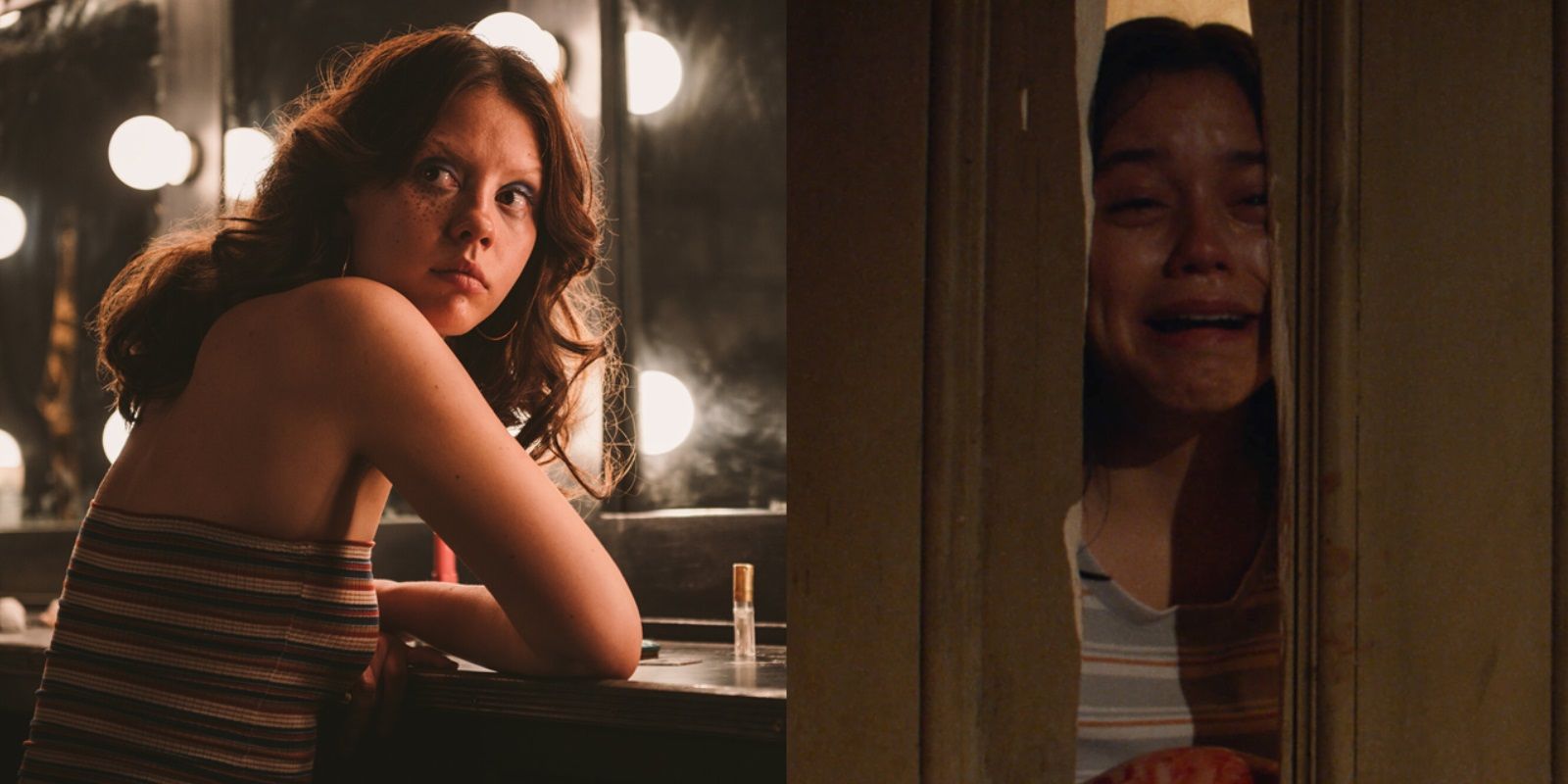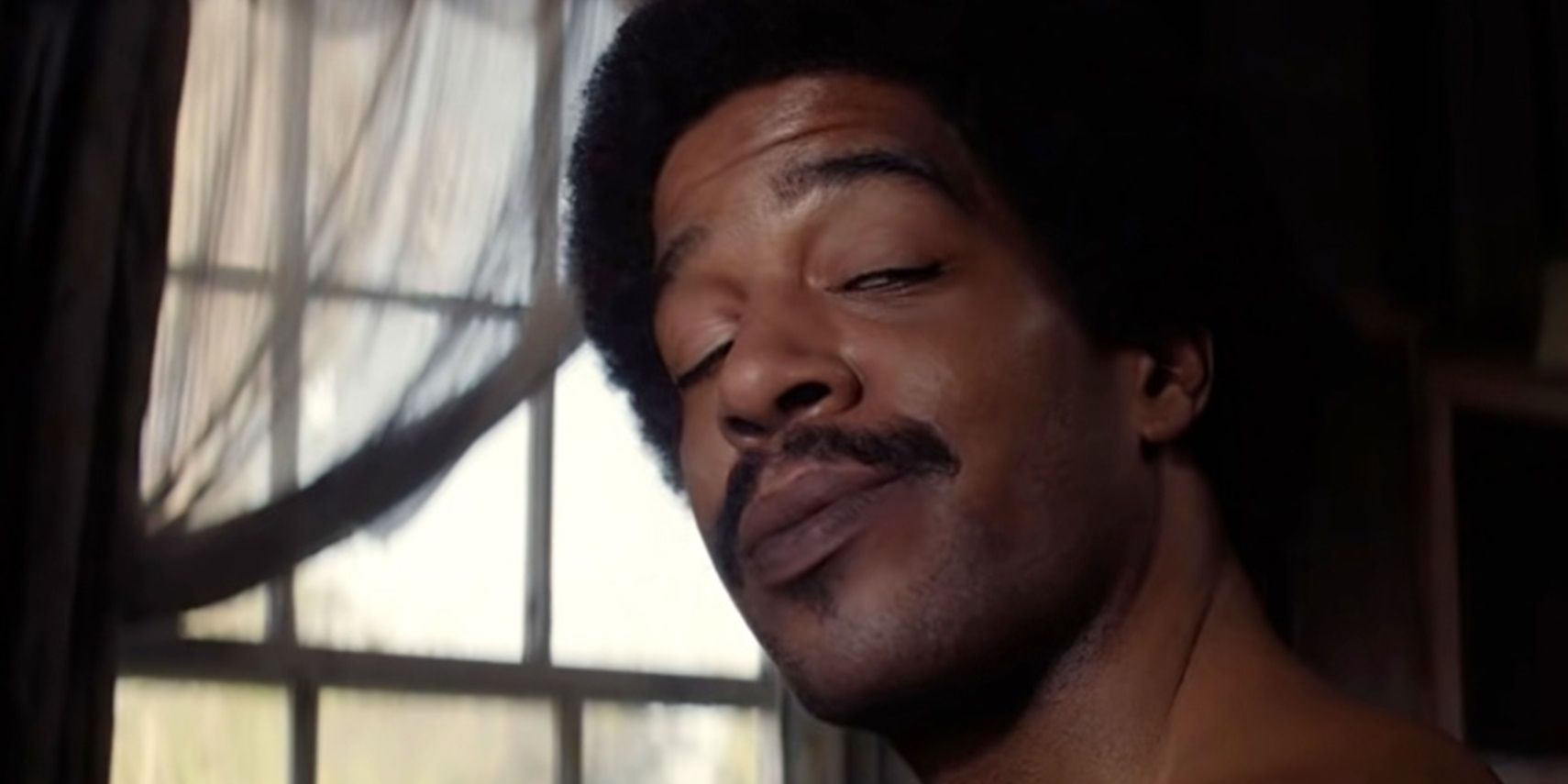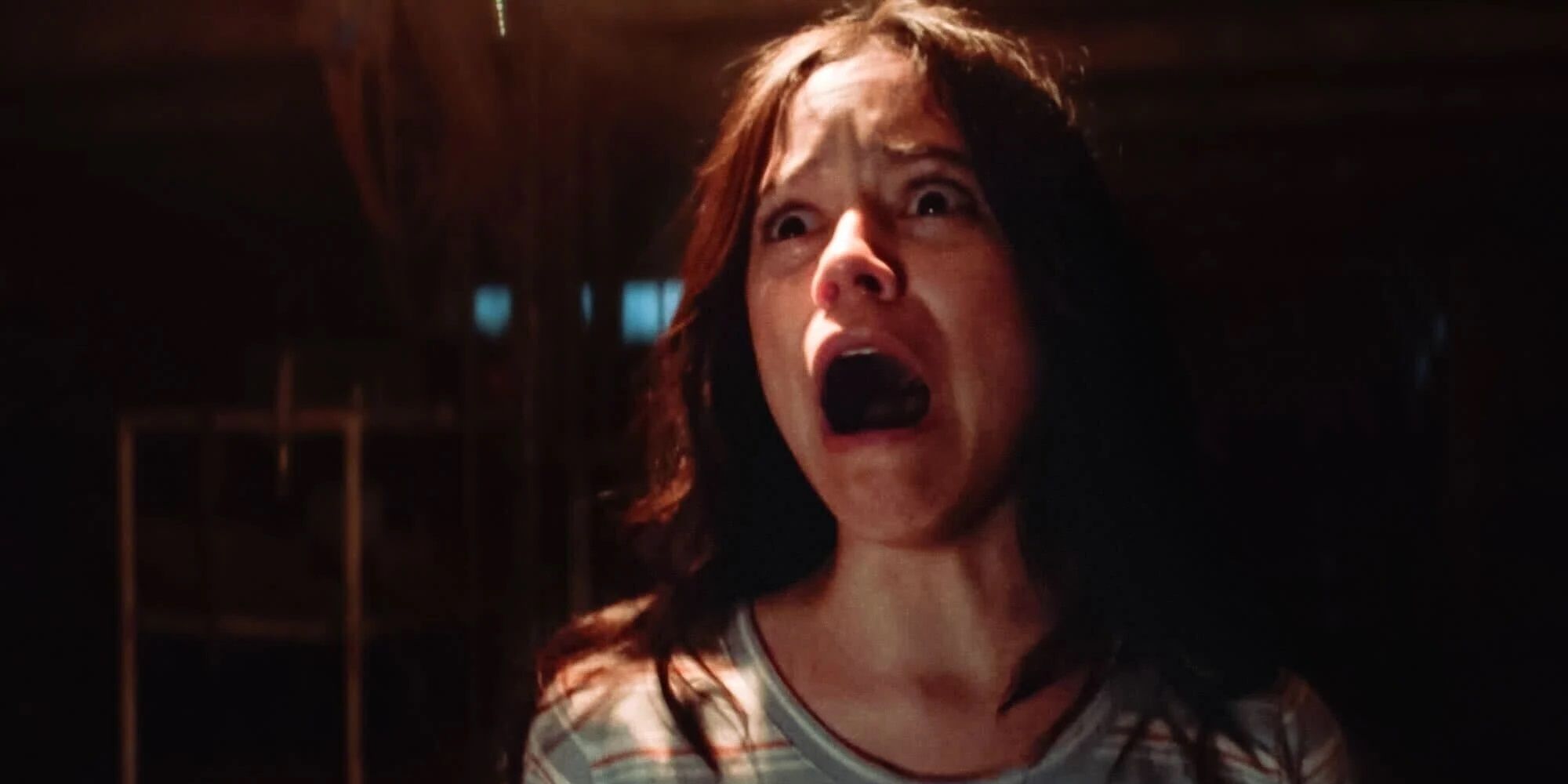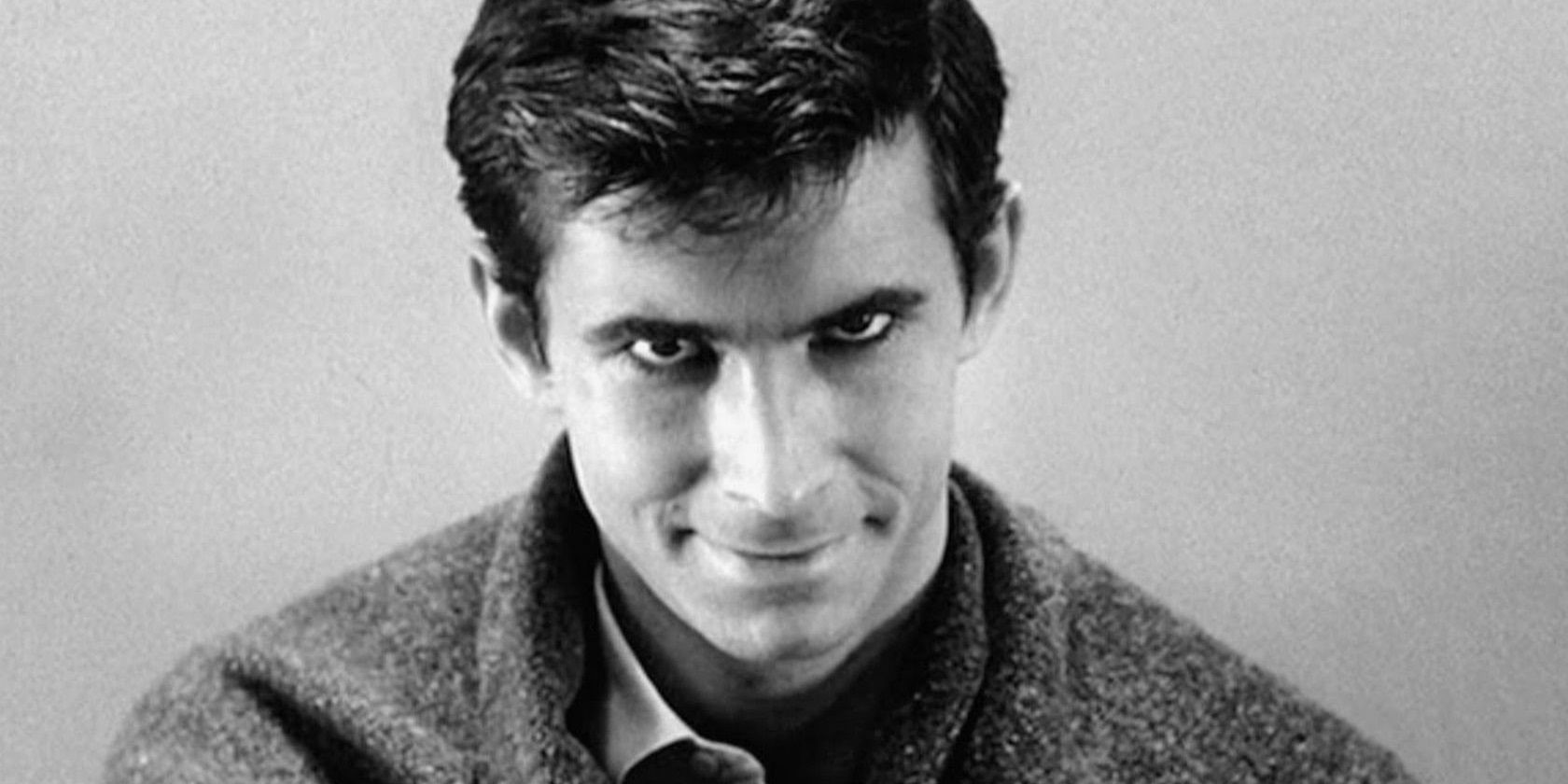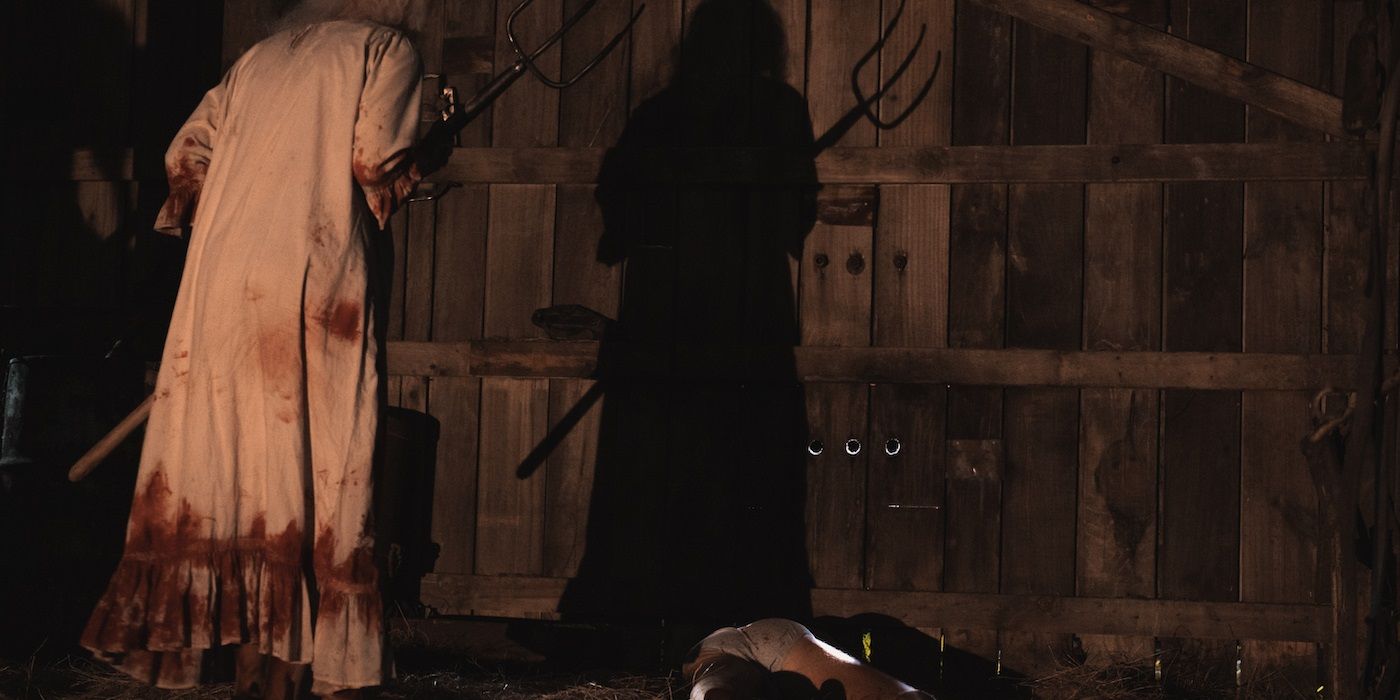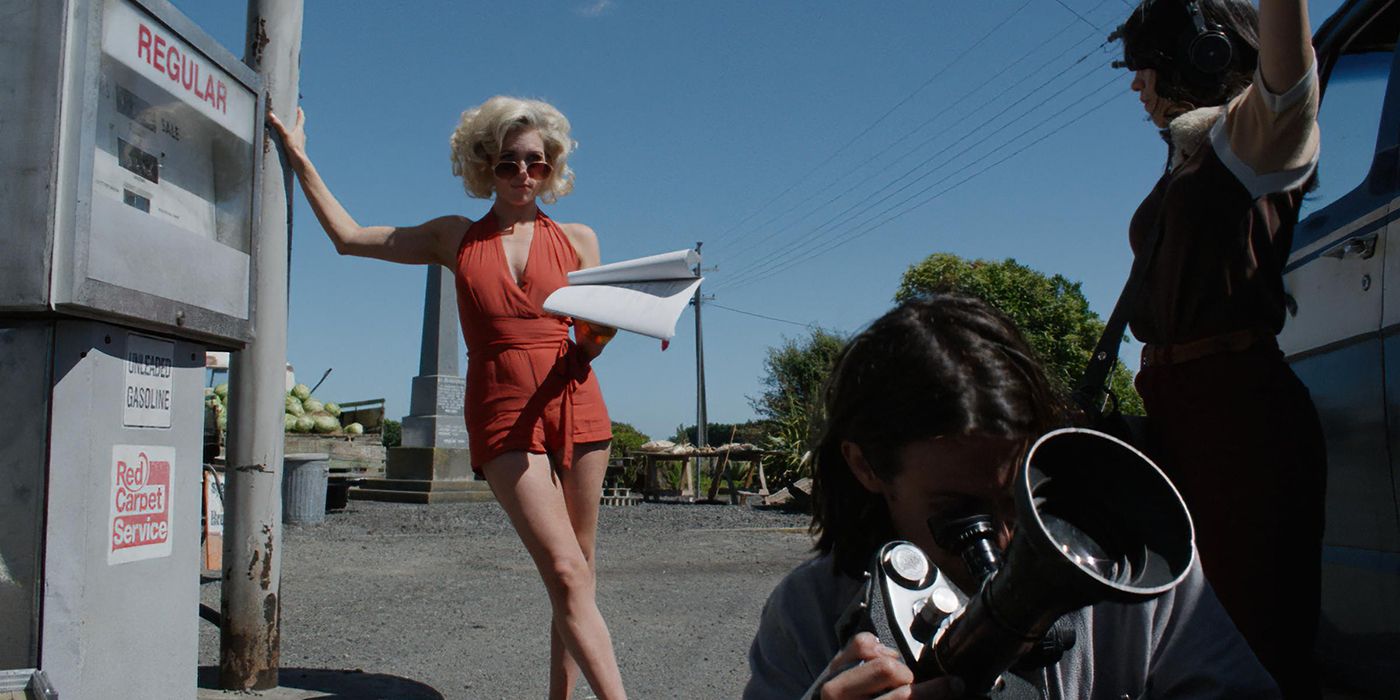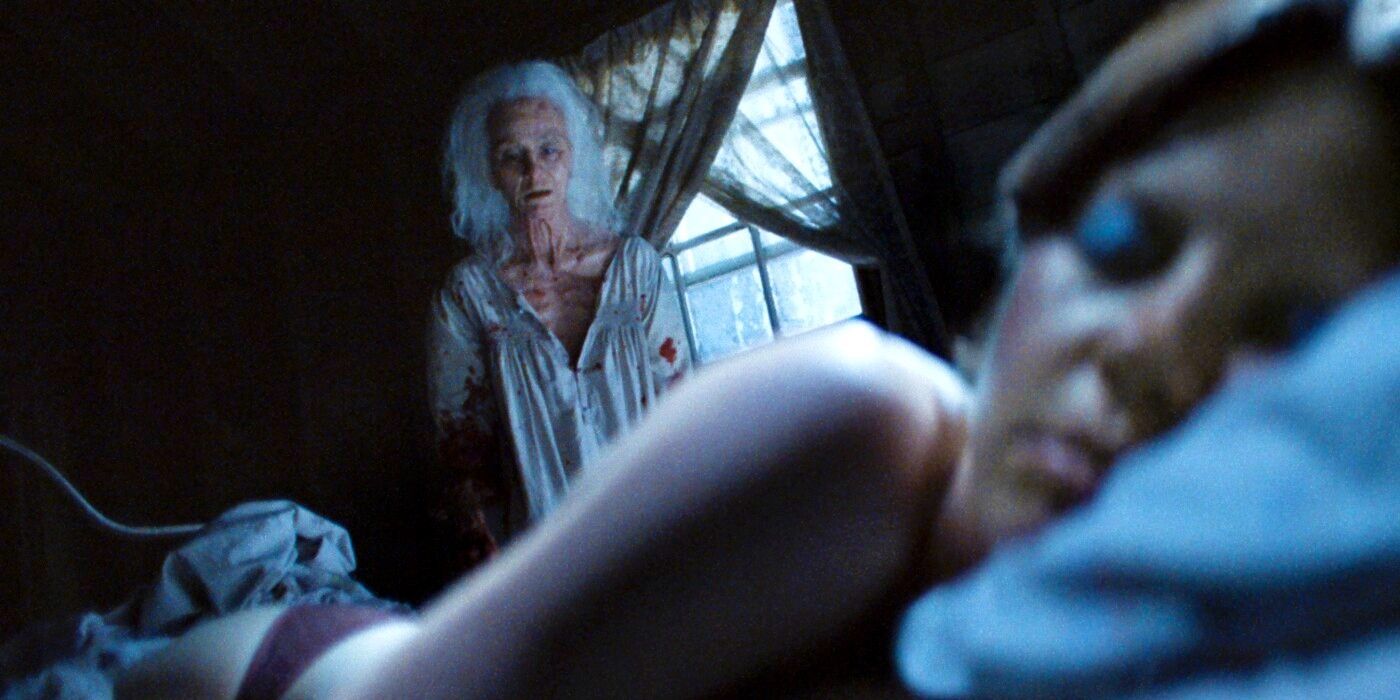Aptly described as “Boogie Nights meets The Texas Chain Saw Massacre,” Ti West’s X has been praised as one of the strongest horror movies of the year. X is a much better Texas Chainsaw movie than the official Texas Chainsaw movie that dropped on Netflix a few weeks ago.
While X has been praised as a sharp deconstruction of the slasher genre, satirizing its tropes and exploring its morality, it also adheres to many of the familiar conventions, like “sex equals death” and the “final girl.”
Sex Equals Death
In Scream, Jamie Kennedy outlined the “sex equals death” trope of slasher movies. The killers target the sexually active characters and the abstinent characters are spared. This trope has been read as a subtextual exploration of the supposed evils of premarital sex (and other sins that get youngsters killed in horror movies, like drug use and underage drinking).
In X, West explores the “sex equals death” trope in more depth than any slasher before it. The promiscuous characters aren’t killed by some cosmic objection to their sexual activity. Those conservative social attitudes are baked into the plot with a sexually repressed couple targeting pornographers as punishment for their sinful lifestyle.
Creepy Basement
Horror protagonists often make the unwise decision to explore a creepy basement. X foreshadows its creepy basement reveal in the opening flash-forward. In the aftermath of the killing spree, the local sheriff goes down into the basement and the camera focuses on his horrified reaction to what he sees.
Later in the movie, Lorraine is lured into the basement. After seeing what’s down there – a beaten, bloodied, chained-up naked man implied to be Pearl’s living sex toy – Lorraine tries to escape, but finds that she’s locked in there.
Nods To Hitchcock
Since Alfred Hitchcock practically defined modern horror cinema with the tension-building tricks and techniques of Psycho, most modern horror movies include nods and homages to his groundbreaking work. There are a bunch of references to Psycho peppered throughout X, both overt conversations about the movie itself and subtle visual parallels with the familiar Hitchcockian imagery.
Lorraine name-checks Psycho as one of R.J.’s favorite movies – and one of the reasons he wants to be a filmmaker – and the same scene has sandwiches made on white Wonder Bread just like the sandwiches eaten by Norman Bates and Marion Crane ahead of Norman’s murder spree. Wayne peeping through a hole in the wall of the barn is a nod to Norman’s voyeurism in Psycho, while the submerged car that Jackson finds in the swamp calls back to the unnerving final shot of the Hitchcock masterpiece.
Split Up And Look For Clues
In most horror movies, the protagonists put themselves in harm’s way. When a clear and present danger presents itself, they follow in the footsteps of Mystery, Inc. and split up to look for clues. With nobody looking out for them, these characters are vulnerable to being picked off one by one by the villains.
That’s exactly what happens in X when a couple of characters go missing. The survivors all go their separate ways to look for their missing friends – and each of them meets a grisly fate. Maxine is the only one who makes it out alive, because Lorraine gets herself killed by running off on her own.
Foreshadowing
When it’s used subtly, foreshadowing can be one of the smartest tricks in a horror filmmaker’s playbook. In X, West foreshadows all the characters’ deaths. At the strip club, Bobby-Lynne is seen in front of a mural of an alligator pulling off a blonde woman’s bikini, foreshadowing her death by alligator attack in a lake.
After seeing the dailies from his porno, Wayne says, “People’s eyes are gonna pop out of their skulls,” like his eye does when Pearl stabs it with a pitchfork. Jackson mentions that he was threatened by armed farmers while fighting in Vietnam; later, he’s killed by a gun-toting farmer.
Psycho-Biddy
Robert Aldrich created a whole new subgenre of horror cinema with his seminal classic What Ever Happened to Baby Jane?, about an aging former movie star who torments her younger sister. This movie became the defining work of the “psycho-biddy” genre, also known as the “hagsploitation” genre.
These films tell stories about formerly glamorous women who become bitter and violent in their twilight years. X’s villain, Pearl, fits the bill perfectly. She laments Maxine’s youth and vibrancy, and even tells her that she used to be young and pretty like her. She’s Baby Jane Hudson with a pitchfork.
Final Girl
The most obvious slasher trope that X adheres to – besides the shotgun-wielding slashers themselves – is the “final girl.” All the protagonists in X get killed by the villains except for one lucky young woman. Like Scream’s iconic protagonist Sidney Prescott, X’s Maxine Minx gets to have her cake and eat it, too.
She’s a final girl in the sense that she thwarts the killers and emerges as the last one standing, but she isn’t beholden to the restrictions of the trope. Unlike many other horror protagonists, Maxine and Sidney get to both have sex and survive to the end credits.

